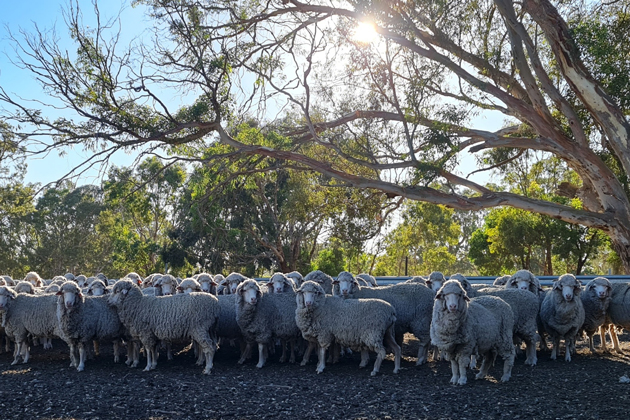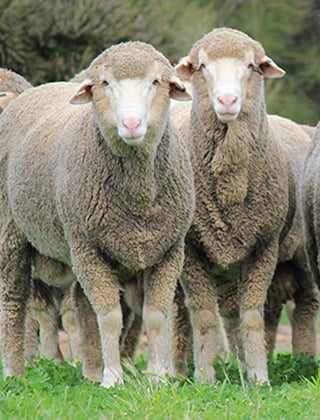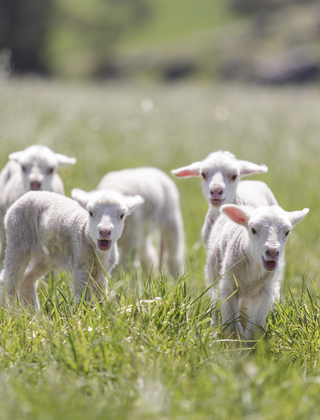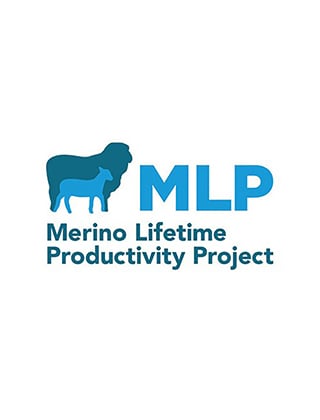MLP project proving its value

While the data collection and analytical phase of the Merino Lifetime Productivity (MLP) project is ongoing, the project has already provided substantial benefits to the Merino industry. For example, it has facilitated further research initiatives, improved genetic evaluation systems, provided early insights through project analysis, and encouraged positive social and practice changes.
The MLP project was initiated in 2015 with the aim of creating a unique Merino database that will be used to enhance existing breeding and selection methods at young ages, leading to increased lifetime productivity.
The data collection phase of the project spans from 2015 to 2024, while the analysis component commenced in 2022 and will continue until 2026. Once the complete dataset is available in 2024, the database will be used to address a wide range of both genetic and management questions for both commercial wool producers and their ram breeders.
However, the MLP project has already delivered significant advantages to the Merino industry. Read on for four of the immediate benefits.
Immediate benefit No.1: Enabler of additional industry research
The core MLP project has been instrumental in supporting various add-on projects funded by AWI and other entities. These additional projects involve a mix of MLP ewes and wethers, and the offspring of the ewes. Some notable projects include:
- The Murdoch University-led GEPEP project, assessing the viability of practical feed efficiency assessments using new ways of measuring and comparing feed intake, body composition and productivity.
- Through a GEPEP and a UNE-led MLA-funded project, four of the five MLP project sites will be assessed for methane production.
- The NSW DPI and MLA Donor Company project, evaluating Merino meat eating quality and its association with lifetime production traits.
- The CSIRO Birth Recording project, generating data to study neonatal fitness and survival.
- The Animal Health Australia, Murdoch University and Nextgen Agri project, focusing on the development of Australian Footrot Resistant breeding values.
- The CSIRO and AWI-funded Resilience project, spanning phases 1 and 2, understanding and predicting immune competence and its relationship to production traits.
- The Wells Classer Trial, exploring the effectiveness of sheep classers in predicting lifetime performance.

Chris Bowman and Bill Walker, Wells Classer Trial, MerinoLink 2022.
Immediate benefit No.2: A more robust genetic evaluation system for the Merino industry
The MLP project has annually collected data on visual and objective performance traits on 5,700 ewes that are the daughters of 134 industry AI sires. This data, combined with genotype information, has and continues to be routinely submitted to MERINOSELECT leading to enhancements in the estimates of breeding performance of all animals.
The substantial volume of data collected includes crucial yet challenging-to-measure traits such as reproduction, adult performance, and worm egg count. This wealth of data has significantly bolstered the Merino genomic reference population. With 40% of MERINOSELECT animals now undergoing annual genotyping, the advantages of higher accuracy breeding values are becoming more widespread. This has translated into greater rates of genetic improvement, which will have a significant positive impact across the industry into the future.
Additionally, the MLP reproduction data has played a pivotal role in the development of the genomically enhanced MERINOSELECT reproduction model, which was launched in 2022. And in 2023, the MLP dataset along with other key datasets was used to update the genetic assumptions such as heritability, genetic correlations and trait means used for calculating breeding values.
For index development, MLP has enabled a more evidenced based partitioning of emphasis between reproduction and adult wool production, leading to a more accurate evaluation system.
Immediate benefit No.3: Early analysis insights and data for development
During the data collection phase, MLP has provided early analysis insights from both the core and add-on projects. These insights have been shared through project newsletters, publications like Beyond the Bale, conferences, and various industry events. Some noteworthy insights include:
- The understanding that a one-size-fits-all culling approach for optimising reproduction in commercial flocks is unlikely.
- The renewed importance of including at least one late hogget or adult fleece record in a measurement program for predicting lifetime wool production.
- The variability in sire mating success rates among naturally mated teams of rams and the occurrence of twins born from different sires.
- That udder traits are heritable and are closely related to lamb survival.
- That selecting for eating quality has minimal impact on key production traits.
- The heritability of ewe survival is low but variable like reproduction. There is a moderate genetic relationship between improved survival and lower wrinkle.
- That skin pigmentation recorded at marking is highly related to lifetime skin pigmentation.
- Yields collected at the mid side reliably predict differences in fleece weight even under drought conditions.
- Whole fleece testing at two MLP sites showed that longer staple length at any fleece weight results in slightly higher yield.
- Trained pregnancy scan operators can reliably predict foetal age.
- The MLP project sheep have contributed to the development of new industry visual scores, such as teeth eruption, leg and feet scores, and udder scores.

Macquarie 2017 Drop Super Ewe, weaned 13 lambs from 5 joinings, held here by AMSEA Executive Officer Ben Swain.
Immediate benefit No.4: Social and practice change impact
The MLP project has played a pivotal role in fostering collaboration, networking and the exchange of ideas within the Merino industry. This industry is known for its diverse breeding philosophies, sometimes leading to scepticism and rivalry among advocates. MLP has brought together various viewpoints through site committees and an Industry Steering Committee, fostering greater understanding, mutual respect and collaboration.
Field days have been important gatherings where ram breeders, ram buyers, researchers and advisors can connect and gain firsthand insights into Merino production over time. These events have attracted substantial support, with both in-person and online participation. Attendees have found the content valuable, and surveys conducted during these events have shown increased confidence in utilising MLP site results, which encompass raw data, adjusted sire means, breeding values, classer grades, visual scores, and indexes.
MLP has also introduced several ram breeding operations to sire evaluation for the first time, further enriching the genetic diversity of Merinos involved in across flock genetic evaluation.
Wrap up
Although the full dataset for the MLP project won't be accessible until 2024, it’s important to acknowledge the substantial benefits that have already emerged during the project’s progress. The database, its analysis, along with collective industry knowledge sharing will lead to strategies to improve Merino lifetime productivity.
We’re excited to announce that on 29 May 2024, the MLP New England site will be hosting the project's final field day displaying MLP ewes. We wholeheartedly encourage industry stakeholders to attend this event, as it marks the completion of the lifetime dataset and the commencement of comprehensive project analysis. We look forward to welcoming you and celebrating this milestone.
FINAL MLP
New England Field Day
SAVE THE DATE
Wednesday 29 May 2024
Sheep displays, presentations, MLP celebration dinner and more
MLP QUICK FACTS
The AWI-funded MLP project is a $13 million ($8 million from AWI plus $5 million from project partners), 10-year venture between AWI, Australian Merino Sire Evaluation Association (AMSEA), nominating stud Merino breeders and site partners.
- Balmoral, Vic
Partner: Tuloona Pastoral
Committee: Balmoral Breeders Association
- Pingelly, WA
Partner: Murdoch University/UWA
Committee: Federation of Performance Sheep Breeders (WA Branch)
- MerinoLink, Temora, NSW
Partner: Moses & Son
Committee: MerinoLink Inc.
- Macquarie, Trangie, NSW
Partner: NSW DPI
Committee: Macquarie Sire Evaluation Association
- New England, NSW
Partner: CSIRO
Committee: New England Merino Sire Evaluation Association
The MLP project is tracking the lifetime performance of 5,700 ewes as they proceed through four to five joinings and annual shearings.
A full suite of assessments will be undertaken including visual trait scoring, classer gradings, objective assessments of a range of key traits and index evaluations.
A unique and extensive dataset will result and be used to enhance existing Merino breeding and selection strategies, for both ram sellers and buyers, to deliver greater lifetime productivity and woolgrower returns.
To stay up to date with the latest MLP findings, visit www.wool.com/MLP. Subscribe to MLP updates via www.merinosuperiorsires.com.au/contact-us
This article appeared in the December 2023 edition of AWI’s Beyond the Bale magazine. Reproduction of the article is encouraged.















